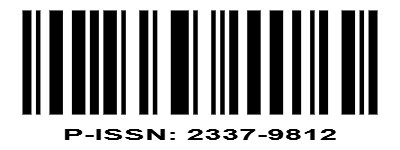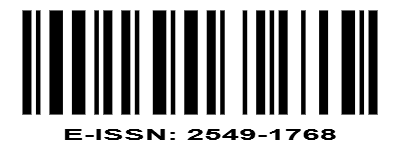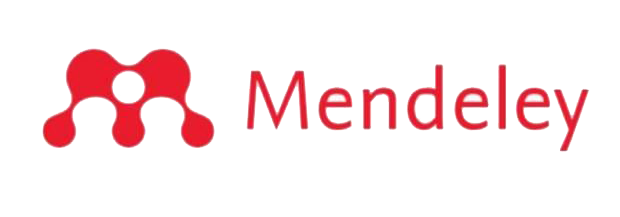Pemberian Salep Ekstrak Bunga Biduri (Calotropis gigantea) untuk Penyembuhan Luka pada Mencit (Mus musculus) Secara Klinis dan Histopatologis
DOI:
https://doi.org/10.22373/biotik.v6i2.5637Keywords:
Milkweed Extract Ointment, Excision Wound and Wound HealingAbstract
Milkweed (Calotropis gigantea) flower has some important compounds in wound healing such as alkaloids, flavonoids, tannins, karbohydrates, glikosides, phenols, saponins, protein and amino acid, and calothropin. The aim of this study was to determine the clinical and histopathological effect of milkweed extract ointment towards wound healing in mice (Mus musculus). The research was carried out in January to August 2018. This study used experimental method with Completely Randomized Design (CRD) with five treatments: betadine oinment as positive control, vaseline oinment as negative control, and three experimental treatment with milkweed extract ointments in 5%, 10% and 15% concentration. Every treatment contains of 6 mice each, which were wounded with 1 cm diameter excision on its back after injected with ketamine anesthesia. Data were analyzed using Analysis of Varians (ANOVA) and continued with Duncan Test α 0,05. The clinical result showed that the fastest time of wound diameter reduction found on experimental treatment with 15% milkweed extract ointment. The histopathological result showed that the highest fibroblast number found on the experimental treatment with 15% milkweed extract ointment. It was concluded that the milkweed extract ointment have an effect on wound healing in mice clinically and histopathologically with 15% concentration being the best in promoting wound healing.Downloads
References
Morison, M. J. 2004. Manajemen Luka. Penerbit Buku Kedokteran EGC: Jakarta
Thakur, R., Jain, N., Pathak, R., Sandhu, S.S. 2011. Review article: Practice in wound healing studies of plants. Evidence-Based Complementary and Alternative Medicine; 1-17.
Cavalcante, G.M., Paula, R.J., Souza, L.P., Sousa, F.B., Mota, M.R., Alves, A.P. 2011. Experimental model of traumatic ulcer in the cheek mucosa of rats. Acta Cirúrgica Brasileira; 26(3):227-234.
Sari, L. 2006. Pemanfaatan obat tradisional dengan pertimbangan manfaat dan keamanannya. Majalah Ilmu Kefarmasian; 3(1):01-07.
Kumar, S.S., Sivamani, P., Baskaran, C., Mohamed, J.M. 2012. Evaluation of anti microbial activity and phytochemical analysis of organic solvent extracts of calotropis gigantea. IOSR J. of Pharm; 2(3): 389-394.
James, et al. 2011. Assessment of Biological Activities: A Comparison of Pergularia daemia and Jatropha curcas Leaf Extracts. British Biotechnology Journal. Vol. 1(3): 85-100.
Habib & Karim. 2009. Antimicrobial Activity of Di-(2-ethylhexyl) Phthalate and Anhydrosophoradiol-3-acetate Isolated from Calotropis gigantea (Linn.) Flower. Mycobiology; 37(1): 31-36.
Habib & Karim. 2012. Antitumor Evaluation of di-(ethylhexyl) Phthalate (DEHP) Isolated from Calotropis gigantea L. Flower. Acta Pharm; 62: 607-615.
Babu, S.A.R., & Karki. 2012. Wound healing Calotropis gigantae leaves in albino wistar rats. In. J. Pharm; 2(1): 195-199.
Sharma, Y., Jayabalan, Ramandeep, S., Alok, S. 2013. Current Aspecs of Wound Healing Agents from Medicinal Plants: A Review. Journal of Medicinal Plants Studies. Vol. 1(3):1-11.
Dhivya & Manimegalai. 2013. Preeliminary Phytochemical Screening and GC-MS Profiling of Ethanolic Flower Extract of Calotropis Gigantea Linn. Journal of Pharmacognosy and Phytochemistry; 2(3):28-32.
Ansel, H.C. 2004. Pengantar Bentuk Sediaan Farmasi. 4th ed. Jakarta:UI Press.
Sachdeva, K., Garg, P., Singhal, M., Srivastava, B. 2011. Pharmacological evaluation of Jatropha curcas Linn (stem bark) for wound healing potential in rats. Pharmacologyonline. Vol: 3:251-264.
Murugan. 2012. Antimicrobial activity of leaves and latex extract of the herbal plant Calotropis gigantea (Erukku in Tamil). IJBPAS; 1(3): 261-170.
Yuhernita, Juniarti, Aryenti. 2014. Pengaruh Pemberian Gel Dari Ekstrak Meanol Daun Jarak Tintir (Jatropha multifida) Terhadap Kepadatan Kolagen dan Jumlah Angiogenesis dalam Proses Penyembuhan Luka. Prosiding Seminar Nasional dan Workshop “Perkembangan Terkini Sains Farmasi dan Klinik IV”.
Lenard, L. & Dean, W., English, J. 2000. Controlling Inflammation with Proteolytic Enzymes.http://www.allergyresearchgroup.com. Diakses tanggal 15 Juli 2018.
Hatz, R.A., Niedner, R., Vanscheidt, W. 2004. Physiology of Wound Healing. Berlin: Springer-Verlag GmbH Co, p: 1-16.
Eroschenko, V.P. 2003. Atlas Histologi Difiore: Dengan Korelasi Fungsional. Edisi 9. Jakarta: Penerbit Buku Kedokteran EGC. p. 7-31;61-65.
Syarfati, K, Eriani, Damhoeri, A. 2011. The potential of jarak cina (Jatropha multifida L.) secretions in healing new-wounded mice. Jurnal Natural. 11(1):16-19
Downloads
Published
Issue
Section
License
Authors who publish with BIOTIK: Jurnal Ilmiah Biologi Teknologi dan Kependidikan agree to the following terms:
- Authors retain copyright and grant the journal right of first publication with the work simultaneously licensed under a Creative Commons Attribution License that allows others to share the work with an acknowledgement of the work's authorship and initial publication in this journal.
- Authors are able to enter into separate, additional contractual arrangements for the non-exclusive distribution of the journal's published version of the work (e.g., post it to an institutional repository or publish it in a book), with an acknowledgement of its initial publication in this journal.
- Authors are permitted and encouraged to post their work online (e.g., in institutional repositories or on their website) prior to and during the submission process, as it can lead to productive exchanges, as well as earlier and greater citation of published work.











